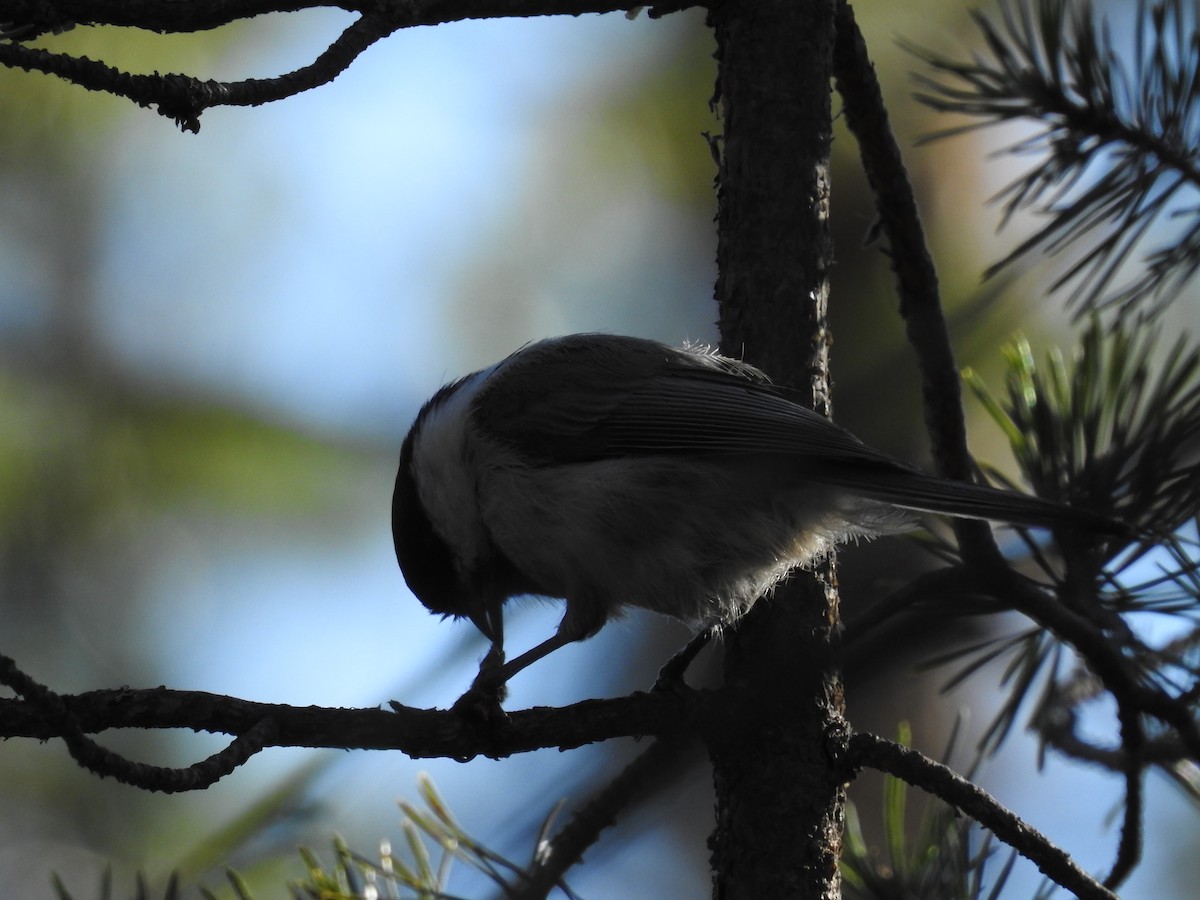Grey-headed Chickadee
A species of Chickadees and allies, Also known as Siberian Tit Scientific name : Poecile cinctus Genus : Chickadees and allies
Grey-headed Chickadee, A species of Chickadees and allies
Also known as:
Siberian Tit
Botanical name: Poecile cinctus
Genus: Chickadees and allies
Content
Description General Info
 Photo By Ashwin Viswanathan
Photo By Ashwin Viswanathan Description
The grey-headed chickadee or Siberian tit (Poecile cinctus, formerly Parus cinctus) is a passerine bird in the tit family Paridae. It is a widespread resident breeder throughout subarctic Scandinavia and the northern Palearctic, and also into North America in Alaska and the far northwest of Canada. It is a conifer specialist. It is resident, and most birds do not migrate. Curiously (with respect to its name), the bird has no grey on its head, which is black, white, and brown. It is a fairly large tit, 13.5–14 cm long with a weight of 11–14.3 g. The head is dark brown with white cheeks, the mantle brown, the wing feathers blackish with pale fringes, and the underparts whitish with pale brown flanks. Ecologists in Folldal, Hedmark, Norway found that the Siberian tits accounted for only 1% of all tit individuals in lichen-dominated pine forest in 2011 as opposed to 64% in 1982. This dramatic reduction is attributed to the interspecies competition with the willow tits and great tits, decreased vegetation due to climate change, and logging of old-growth trees which are preferred over new-growth trees . 
Size
13 - 23 cm
Life Expectancy
7-9 years
Nest Placement
Cavity
Feeding Habits
Grey-headed Chickadee devour a diverse diet, mainly consisting of invertebrates like insects and spiders, as well as various seeds and carrion. It forages actively, exploiting different food sources based on seasonal availability.
Habitat
Grey-headed Chickadee predominantly inhabits lowland conifer forests with a preference for old-growth stands of spruce, larch, and pine, specific to areas featuring dead or decaying trees. This species extends to submontane and montane birch forests, as well as riverine forests intermixed with willow thickets. Beyond the tree line, grey-headed Chickadee can be found in tundra regions near dwarf and mature willows along waterways, and in alpine heathlands. During the non-breeding season, grey-headed Chickadee's habitat also encompasses areas with alders and aspens, and the species is known to utilize dwarf scrub such as Labrador tea.
Nest Behavior
Pairs of grey-headed Chickadees are monogamous and maintain year-round territories, sometimes shared by two pairs. The male provisions the female before and during early nestling stages. Nesting specifics from North America are scarce, with more data from European studies.
Nest Characteristics
Grey-headed Chickadee's nest is typically sited in a tree cavity or old woodpecker hole, often low at 1-15 feet above ground. The nest, constructed by the female, features a foundation of decaying wood, a layer of grass or moss, and a cup lined with animal hair.
Dite type
Granivorous
General Info
Feeding Habits
Bird food type
Bird Feeder Type

Small Hopper

Small Tube Feeder

Platform

 Photo By Ashwin Viswanathan
Photo By Ashwin Viswanathan Scientific Classification
Phylum
Chordates Class
Birds Order
Perching birds Family
Tits Genus
Chickadees and allies Species
Grey-headed Chickadee